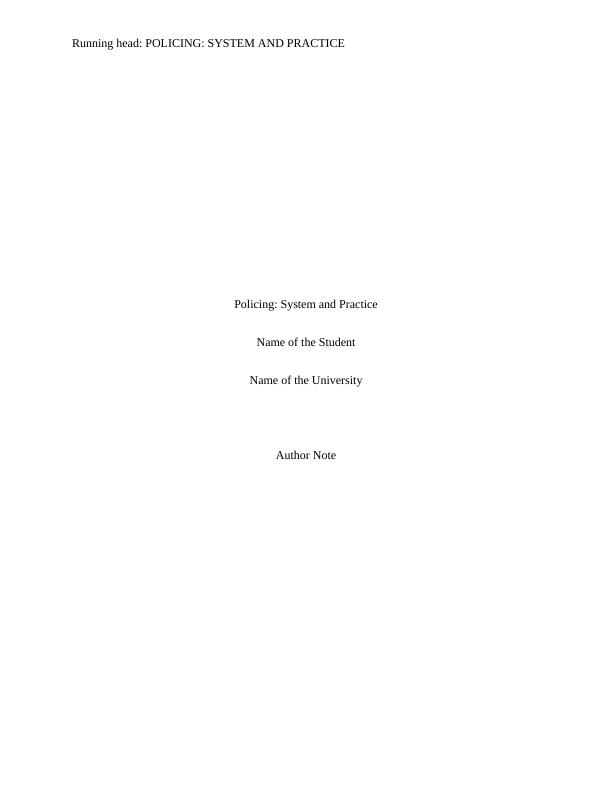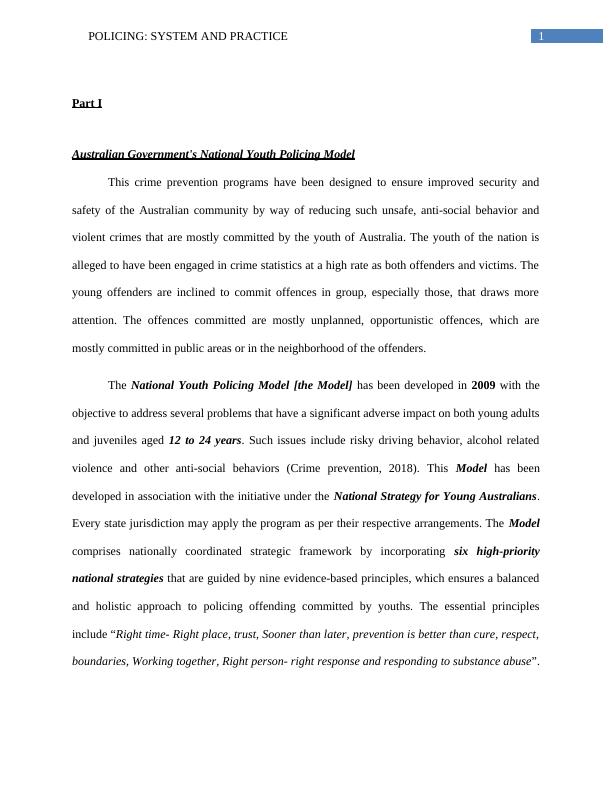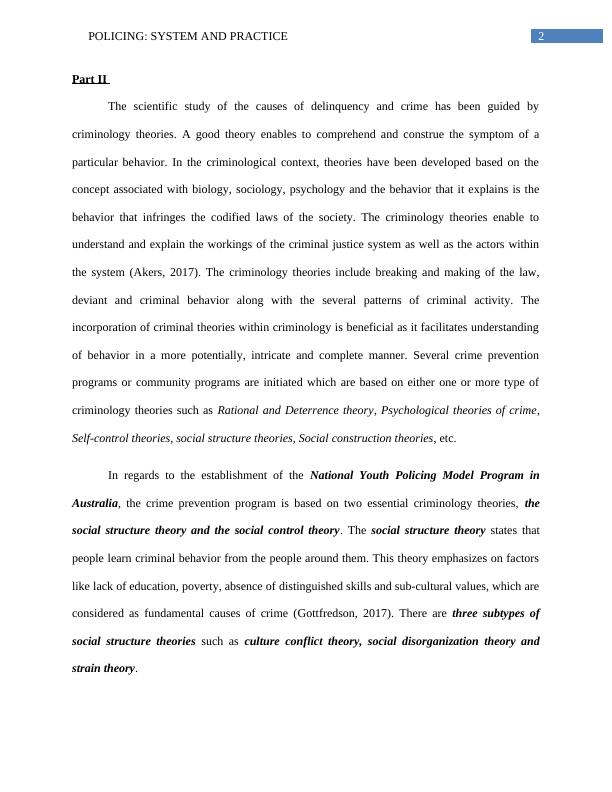National Youth Policing Model in Australia: A Criminological Perspective
The assignment requires the identification and description of a crime prevention program in Australia, as well as the evaluation of its theoretical rationale and empirical effectiveness.
13 Pages3419 Words264 Views
Added on 2023-06-13
About This Document
This article discusses the National Youth Policing Model in Australia and its criminological perspective. It explains the criminology theories behind the program and how it aims to reduce crime among young people. The article also highlights the essential principles of the program and how it relates to social structure theory, social control theory, and cultural conflict theory. The program's collaboration with other sectors like education, justice, and health is also discussed. Course code and college/university are not mentioned.
National Youth Policing Model in Australia: A Criminological Perspective
The assignment requires the identification and description of a crime prevention program in Australia, as well as the evaluation of its theoretical rationale and empirical effectiveness.
Added on 2023-06-13
ShareRelated Documents
End of preview
Want to access all the pages? Upload your documents or become a member.
Restorative Criminal Justice System: Key Issues and Impacts
|4
|944
|366
Criminology
|15
|3892
|57
Youth Justice System and Knife Crime in England and Wales
|18
|1600
|33
INTRODUCTION TO CRIMINOLOGY AND CRIMINAL JUSTICE.
|6
|1418
|55
Reflective Professional Practice
|6
|1261
|88
Restorative Justice Programs in Victoria and New South Wales
|6
|1618
|67




